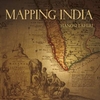-
Home
-
Contributors
-
International
-
Account
-
Information
More From Contributor
- both historic & contemporary
- how England has scrutinized itself, ...
- many of which have featured in the Etape du Tour
- are put under the spotlight, & an extended section on the 2013 race is included, with detailed maps & statistics on each of this year's stages. ...
Includes:: a map of each edition of the Tour de France, along with photographs, text on the history of the race, & lists of the stages, winners & key statistics, Mapping Le Tour is essential reading for any cycling fan. Each Tour de France race map is accompanied by statistics, including: Race & stage distances Highest point Number of starters & finishers Average speed Jersey winners An extended section on the 2014 race is also included. ...
- ] From the 150 images, a reader can glean details about history, topography, development, ...

Mapping Latin America
from the hand-drawn maps of Native Americans, to those by famed explorers such as Alexander von Humboldt, to those produced in today`s newspapers and magazines for the general public.The maps collected here, and the interpretations that accompany them, provide an excellent resource to help readers better understand how Latin American countries, regions, provinces, and municipalities came to be defined, measured, organized, occupied, settled, disputed, and understood - that is, how they came to have specific meanings to specific people at specific moments in time. The first book to deal with the broad sweep of mapping activities across modern Latin America, this lavishly illustrated volume will be required reading for students and scholars of geography and Latin American
history and anyone interested in understanding the significance of maps in human cultures and societies.
This page now acts as a permanent archive for this product. Add more information using the comments box below to ensure it can still be found by future generations.
Use our search facility to see if it is available from an alternative contributor.
- Availability: Out Of Stock
- Supplier: Stanfords
- SKU: 9780226618227
Product Description
For many, a map is nothing more than a tool used to determine the location or distribution of something
- a country, a city, or a natural resource. But maps reveal much more: to really read a map means to examine what it shows & what it doesn`t, & to ask who made it, why, & for whom. The contributors to this new volume ask these sorts of questions about maps of Latin America, & in doing so they illuminate the ways cartography has helped to shape this region from the Rio Grande to Patagonia. In ” Mapping Latin America”, Jordana Dym & Karl Offen bring together scholars from a wide range of disciplines to examine & interpret more than five centuries of Latin American maps. Individual chapters take on maps of every size & scale & from a wide variety of mapmakers
- from the h&-drawn maps of Native Americans, to those by famed explorers such as Alexander von Humboldt, to those produced in today`s newspapers & magazines for the general public. The maps collected here, & the interpretations that accompany them, provide an excellent resource to help readers better understand how Latin American countries, regions, provinces, & municipalities came to be defined, measured, organized, occupied, settled, disputed, & understood
- that is, how they came to have specific meanings to specific people at specific moments in time. The first book to deal with the broad sweep of mapping activities across modern Latin America, this lavishly illustrated volume will be required reading for students & scholars of geography & Latin American history & anyone interested in understanding the significance of maps in human cultures & societies.
Reviews/Comments
Add New
Intelligent Comparison
We couldn't find anything!
Perhaps this product's unique.... Or perhaps we are still looking for comparisons!
Click to bump this page and we'll hurry up.
Price History
Vouchers
Do you know a voucher code for this product or supplier? Add it to Insights for others to use.


 United Kingdom
United Kingdom
 France
France
 Germany
Germany
 Netherlands
Netherlands
 Sweden
Sweden
 USA
USA
 Italy
Italy
 Spain
Spain







 Denmark
Denmark